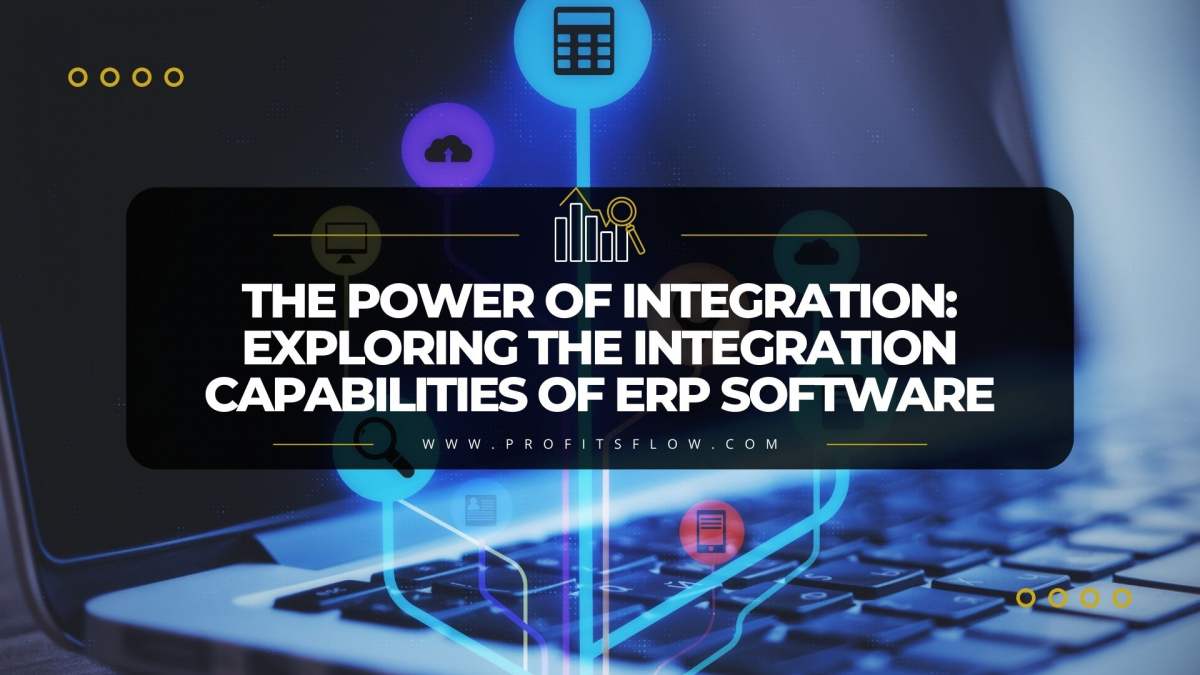Seamless ERP Integration: Transforming Your Business with ERP Software
Today, many businesses rely on multiple software solutions to manage various aspects of their operations. However, the lack of integration between these systems often leads to inefficiencies, data inconsistencies, and a fragmented view of their business processes. Enterprise Resource Planning (ERP) software, with its robust integration capabilities, emerges as a strategic solution to overcome these challenges. In this blog post, we will delve into the significance of ERP Integration and how it can revolutionise your business operations.
With ERP integration you get the added benefit of seamless data flow. Integration lies at the core of ERP software, enabling a seamless flow of data across different functions and departments. By integrating systems such as finance, inventory management, sales, and customer relationship management, businesses can eliminate backed up data silos and ensure consistent and accurate information throughout the organisation. This streamlined data flow allows for better decision-making, improved collaboration, and increased operational efficiency.
The use of a fully integrated ERP system also leads to improved efficiency and productivity. When systems are integrated within an ERP software, employees no longer need to switch between multiple applications, re-enter data, or perform manual reconciliations. This automation of processes can lead to significant time increases and cost savings. This allows your employees to focus on more value-added tasks. By reducing manual effort and eliminating duplicate data entry, businesses can achieve enhanced efficiency, improved productivity, and a huge reduction in errors.
One of the often-overlooked areas of an ERP system is how it can give a holistic view of business processes. By integrating various systems, ERP software provides a holistic view of business processes. Managers and decision-makers can gain real-time insights into key performance indicators, allowing them to monitor operations. Here they can identify bottlenecks, and make data-driven decisions that can help the company grow and prosper. Whether it’s tracking inventory levels, analysing sales trends, or managing customer interactions, ERP integration offers a comprehensive overview that empowers businesses to optimize their processes for better results.
ERP can also enhance the customer experience. Integration extends beyond internal processes. It also enables businesses to connect with customers seamlessly. It does this by integrating ERP software with customer relationship management (CRM) systems. Some ERP systems such as our own software solution “EFACS E/8” already has its own built in CRM module. Businesses that use this can gain a 360-degree view of their customers, which allows them to have personalised interactions, improved service delivery, and targeted marketing campaigns. This enhanced customer experience fosters loyalty, satisfaction, and long-term relationships, ultimately driving business growth.
You also must look to the future. ERP integration allows for scalability and future-readiness: As businesses evolve and expand, their software needs may change. ERP software with strong integration capabilities ensures scalability and future-readiness. It allows businesses to add new functionalities, integrate with emerging technologies, and adapt to evolving market trends. By embracing an integrated ERP solution, businesses can stay agile, respond to market dynamics quickly, and seize new opportunities without disrupting their existing systems.
In a highly interconnected business environment, the integration capabilities of ERP software are paramount to achieving operational excellence, improved efficiency, and sustainable growth. By streamlining data flow, enhancing productivity, gaining holistic insights, delivering exceptional customer experiences, and ensuring scalability, businesses can unlock the full potential of their ERP systems. Embrace the power of ERP integration and propel your business towards a more integrated, streamlined, and future-ready future.
